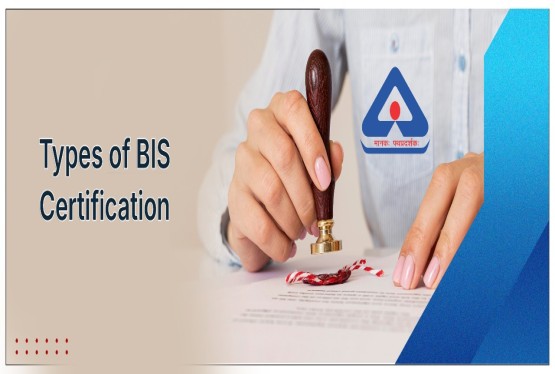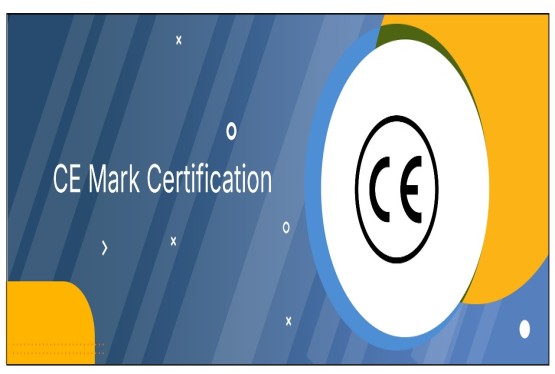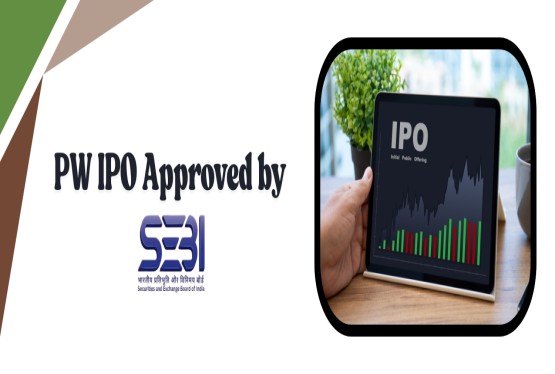Wakefit, a Bengaluru-based D2C (Direct-to-Consumer) startup that began as a mattress and home solutions company, has made an important move by converting from a private limited company to a public limited company. This strategic shift comes in preparation for its planned Initial Public Offering (IPO) scheduled for 2025. According to filings with the Ministry of Corporate Affairs (MCA), the company has officially changed its name from "Wakefit Innovations Private Limited" to "Wakefit Innovations Limited." This development signals the startup's readiness to enter the capital markets and begin a new chapter in its corporate journey.
Name Change and Legal Transition
As per filings accessed through platforms like Tofler and Inc42, Wakefit held an Extraordinary General Meeting (EGM) on June 5, 2025, during which the shareholders passed a resolution approving the name change. This shift from private limited company to public limited company status is a necessary step for any company planning to go public. The new identity, "Wakefit Innovations Limited," signifies a higher level of transparency, compliance, and corporate governance — prerequisites for public listings.
Changing to a public limited company enables Wakefit to raise funds from the general public through equity shares. It also allows early-stage investors and shareholders to partially or fully exit through the IPO route. This legal transformation is often seen in the run-up to IPOs and is considered a sign of operational maturity and financial readiness.
IPO Preparation and Banker Appointments
Wakefit has already begun groundwork for its IPO. According to multiple reports, including from business line and Inc42, the company has appointed three major investment bankers: Axis Capital, IIFL Capital Services, and Nomura. These firms are assisting in structuring the IPO, pricing the shares, and managing the overall compliance process with SEBI and stock exchanges.
The startup aims to raise between INR 1,500 to 2,000 crore through the IPO. This would translate to roughly USD 173 to 231 million based on current exchange rates. These funds will help the company expand its business operations, invest in branding, enhance product offerings, and improve distribution networks.
Appointment of Independent Directors
In an important step towards ensuring good governance, Wakefit has appointed five independent directors to its board. These directors include Arindam Paul, Alok Chandra Misra, Sandhya Pottigari, Gunender Kapur, and Sudeep Nagar. Each has been appointed for a tenure of three years, as recorded in the MCA filings.
The appointment of independent directors is a regulatory requirement for public limited companies in India. These professionals are expected to bring transparency, objectivity, and diverse perspectives to board decisions. Their presence also boosts investor confidence and enhances the company’s governance practices ahead of listing on the stock exchanges.
Wakefit’s Journey and Founders
Wakefit was founded in 2016 by Ankit Garg and Chaitanya Ramalingegowda with the mission to revolutionize sleep solutions in India. Initially known for offering affordable memory foam mattresses, the brand has evolved into a full-fledged home and furniture solutions provider.
The startup followed a D2C model, leveraging e-commerce platforms and its own website to bypass traditional retail markups and reach consumers directly. Its customer-first approach, research-backed products, and data-driven improvements helped it quickly become a household name. The founders' vision and persistence have played a critical role in the company’s rapid rise and popularity across Indian cities.
Product Range and Business Model
Today, Wakefit offers a wide variety of products beyond mattresses. Its inventory includes pillows, mattress protectors, beds, sofas, study tables, bookshelves, wardrobes, shoe racks, and TV units, among others. With this diverse range, Wakefit caters to both the functional and aesthetic needs of modern Indian households.
The D2C model helps the company manage costs effectively and offer high-quality products at competitive prices. Wakefit has also adopted an omni-channel strategy, establishing over 100 offline outlets across India. These include 16 stores in Bengaluru, 12 in Hyderabad, and 6 each in Mumbai, Delhi, and Pune. This wide reach enhances customer experience and builds brand trust.
Revenue Growth and Profitability
Wakefit has demonstrated impressive financial performance over the past few years. The company’s revenue crossed INR 1,000 crore recently, marking a 24% increase from the previous financial year (FY23). In FY24 alone, revenue from operations rose 21% to INR 986.35 crore from INR 812.62 crore in FY23.
More notably, Wakefit achieved profitability at the EBITDA level, posting an EBITDA of INR 65 crore. The company also reported a significant decline in net loss — from INR 145.68 crore in FY23 to just INR 15.05 crore in FY24, a reduction of nearly 90%. Additional income of INR 30.98 crore was recorded in FY24, a sharp increase from INR 7.39 crore the year before. This turnaround signals operational efficiency, cost optimization, and robust demand. These factors make Wakefit an attractive option for investors looking to participate in its IPO.
Funding and Investors
Since its inception, Wakefit has raised over $148 million (approximately INR 1,200 crore) across multiple funding rounds. Its most recent funding came in January 2023, when it secured INR 320 crore in a Series D round. This round was led by Investcorp, with continued participation from earlier investors like Sequoia Capital India (now Peak XV Partners), Verlinvest, and SIG.
These investors have played an important role in scaling Wakefit’s operations, expanding its product line, and establishing offline stores across India. With the IPO, some of these early backers are expected to partially exit or monetize their investments, offering fresh opportunities to public investors.
IPO Timeline and Future Plans
While Wakefit has yet to announce the exact IPO date, it is expected to file its Draft Red Herring Prospectus (DRHP) with SEBI in the upcoming months. Once approved, this document will provide detailed financials, risk factors, and usage of funds. Wakefit’s IPO is expected to be one of the key startup listings in 2025, alongside other big names like PhonePe, Lenskart, Zepto, and Moneyview. These startups have also converted into public limited companies, a necessary step towards listing on the Indian stock exchanges.
According to co-founder Chaitanya Ramalingegowda, the company plans to use the IPO proceeds to expand its product offerings, strengthen its omni-channel presence, and invest in brand-building activities. This includes marketing campaigns, technology upgrades, and new product development.
Facing Direct Competition from Companies
Wakefit operates in a highly competitive space, facing direct competition from companies like Pepperfry, WoodenStreet, SleepyCat, and even traditional furniture retailers. However, Wakefit's edge lies in its D2C model, customer-centric approach, affordability, and extensive data usage in product design and feedback loops. Its focus on both functionality and comfort gives it an advantage in the price-sensitive yet quality-conscious Indian market. The IPO and capital infusion will enable the brand to cement its position further by improving logistics, introducing premium product lines, and reaching Tier II and Tier III cities.
Conclusion
The conversion of Wakefit to a public limited company marks a transformative phase in the startup’s journey. With consistent revenue growth, operational profitability, and investor backing, Wakefit is poised to make a strong debut in the public markets. Its upcoming IPO is not just a capital-raising exercise but a testament to its maturity, stability, and future potential. By bringing more transparency and adopting corporate governance standards required for listed companies, Wakefit is aligning itself with global best practices. As it steps into the public spotlight, the startup is set to inspire a new generation of Indian D2C brands eyeing the capital markets for scale and sustainability.
If you want to convert your company into a Public Limited Company, then you can connect with Compliance Calendar LLP through mail at info@ccoffice.in or Call/Whatsapp at +91 9988424211.
FAQs
Q1. Why did Wakefit convert to a public limited company?
Ans. Wakefit converted to a public limited company to prepare for its upcoming Initial Public Offering (IPO) scheduled in 2025. This conversion enables the company to raise funds from the public by issuing equity shares. It also meets the regulatory requirements necessary for listing on stock exchanges. The move reflects Wakefit’s maturity, improved governance standards, and readiness to operate under greater financial transparency.
Q2. What changes occurred with Wakefit's company name and structure?
Ans. As per filings with the Registrar of Companies (RoC), Wakefit changed its name from “Wakefit Innovations Private Limited” to “Wakefit Innovations Limited” following an Extraordinary General Meeting on June 5, 2025. This change signifies the transition from a private limited structure to a public limited company. It is a formal step that enables the company to invite public investment and comply with listing regulations.
Q3. How much capital is Wakefit planning to raise through its IPO?
Ans. Wakefit aims to raise between Rs.1,500 crore to Rs.2,000 crore through its IPO, which is approximately USD 173 to 231 million. This funding will be used to support the company’s expansion plans, invest in brand-building activities, strengthen its product offerings, and improve distribution channels across India.
Q4. Who are the investment bankers managing Wakefit’s IPO?
Ans. To manage its IPO process, Wakefit has appointed three reputed investment bankers: Axis Capital, IIFL Capital Services, and Nomura. These firms are responsible for advising the company on pricing, structuring, regulatory filings, and coordinating with market regulators like SEBI and the stock exchanges.
Q5. Who are Wakefit’s newly appointed independent directors and why were they appointed?
Ans. Wakefit appointed five independent directors: Arindam Paul, Alok Chandra Misra, Sandhya Pottigari, Gunender Kapur, and Sudeep Nagar, each for a term of three years. These appointments are required by law for public limited companies and are aimed at improving transparency and corporate governance. Independent directors bring objectivity and experience, which helps build investor confidence ahead of the IPO.
Q6. What is Wakefit’s current financial performance before its IPO?
Ans. Wakefit reported a 21% increase in revenue from operations, reaching Rs.986.35 crore in FY24 compared to Rs.812.62 crore in FY23. It also achieved EBITDA profitability with Rs.65 crore and significantly reduced its net loss from Rs.145.68 crore in FY23 to just Rs.15.05 crore in FY24. These improvements indicate strong financial health and business efficiency as the company moves toward its IPO.
Q7. What does the future look like for Wakefit after going public?
Ans. Post-IPO, Wakefit plans to expand its product offerings, increase its omni-channel presence, and enhance its brand visibility. The company also intends to utilize funds for marketing, research, and geographical expansion, particularly into Tier II and Tier III cities. As a public company, Wakefit will operate under higher governance standards, opening more opportunities for growth and investor participation.












































































_crop10_thumb.jpg)







_Rules,_2025_learn_crop10_thumb.jpg)
























































































_crop10_thumb.jpg)








 in BIS FMCS_learn_crop10_thumb.jpg)










_crop10_thumb.jpg)















_crop10_thumb.jpg)





_Code C-888_learn_crop10_thumb.jpeg)
_learn_crop10_thumb.jpg)
































































_Certificate_learn_crop10_thumb.jpg)

_Certificate_(1)_crop10_thumb.jpg)















_learn_crop10_thumb.jpg)

_crop10_thumb.jpg)


















_Scheme_learn_crop10_thumb.jpg)


_learn_crop10_thumb.jpg)










